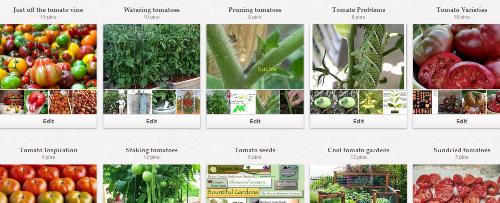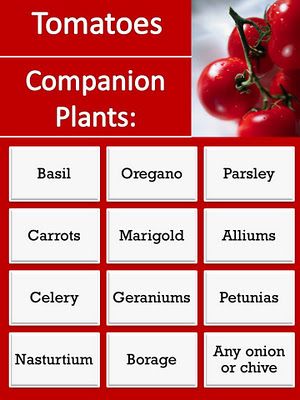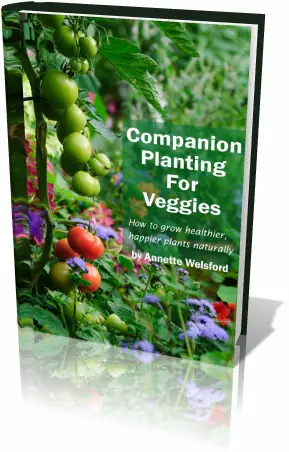| Back to Back Issues Page | |||||||||||
 |
|||||||||||
|
[Tomato Dirt] Companion Plants: BFFs for Tomatoes May 20, 2014 |
|||||||||||
Tomato Dirt Newsletter
|
Tomato Dirt is on Pinterest!
Join us on Pinterest! Browse our 100+ boards (and growing) for all kinds of tomato inspiration and practical information: growing tomatoes, tomato seeds, cold frames for tomatoes, tomato books, tomato greenhouses, , indoor tomatoes – even crafts to do with a tomato theme, now that cold weather is here. Happy pinning!
 |

Feature: Companion Plants: Best Friends for Tomatoes
 |
Image: Red Hill Gardening |
- deter pests and diseases
- improve tomato health
- improve tomato flavor
- act as “good neighbors”
Find out best and worst companions for tomatoes so you can have healthy, productive tomatoes all season long.
And check out all kinds of BFFs for tomatoes on our Companion Plants for Tomatoes Pinterest board.
Dill: A Tomato Friend and Foe
 |
Your tomato plants can still gain significant benefit from companion planting with dill. Instead of planting standard dill, choose fern leaf dill or dwarf varieties, which grow to be just 12-24 inches in height.
Learn about other tomato friends and foes so you can plant strategically this season.
Help Your Crops Make Friends: Companion Planting for Veggies
 |
Image: Companion Planting for Veggies |
- Trap cropping: How to use specific plants to attract pests away from your crop
- Nitrogen fixing: How to plant special cover crops which put nitrogen into the soil rather than take it out.
- Biochemical pest suppression: Discover which flowering plant oozes a chemical into the soil to repel nasty pests that attack the roots of your tomatoes, sugar beets and soy beans.
- Insectary: How to create habitats or environments to attract beneficial predatory insects that eat the nasty pests which devour your precious garden plants.
- Nurse cropping: Discover which tall plants with thick foliage protect more vulnerable species by shading them or shielding them from the wind.
More about Healthy Tomato Planting
| How to Buy Tomato Plants | Planting Tomatoes: Top 10 Tips to Help You Succeed | Tomato Transplanting Mistakes to Avoid | Planting Tomatoes FAQs (Frequently Asked Questions) |
|---|
That’s it for now. More next time!
Until then, happy gardening!
![]()
Kathy with Tomato Dirt
www.tomatodirt.com
Find us on Facebook!
